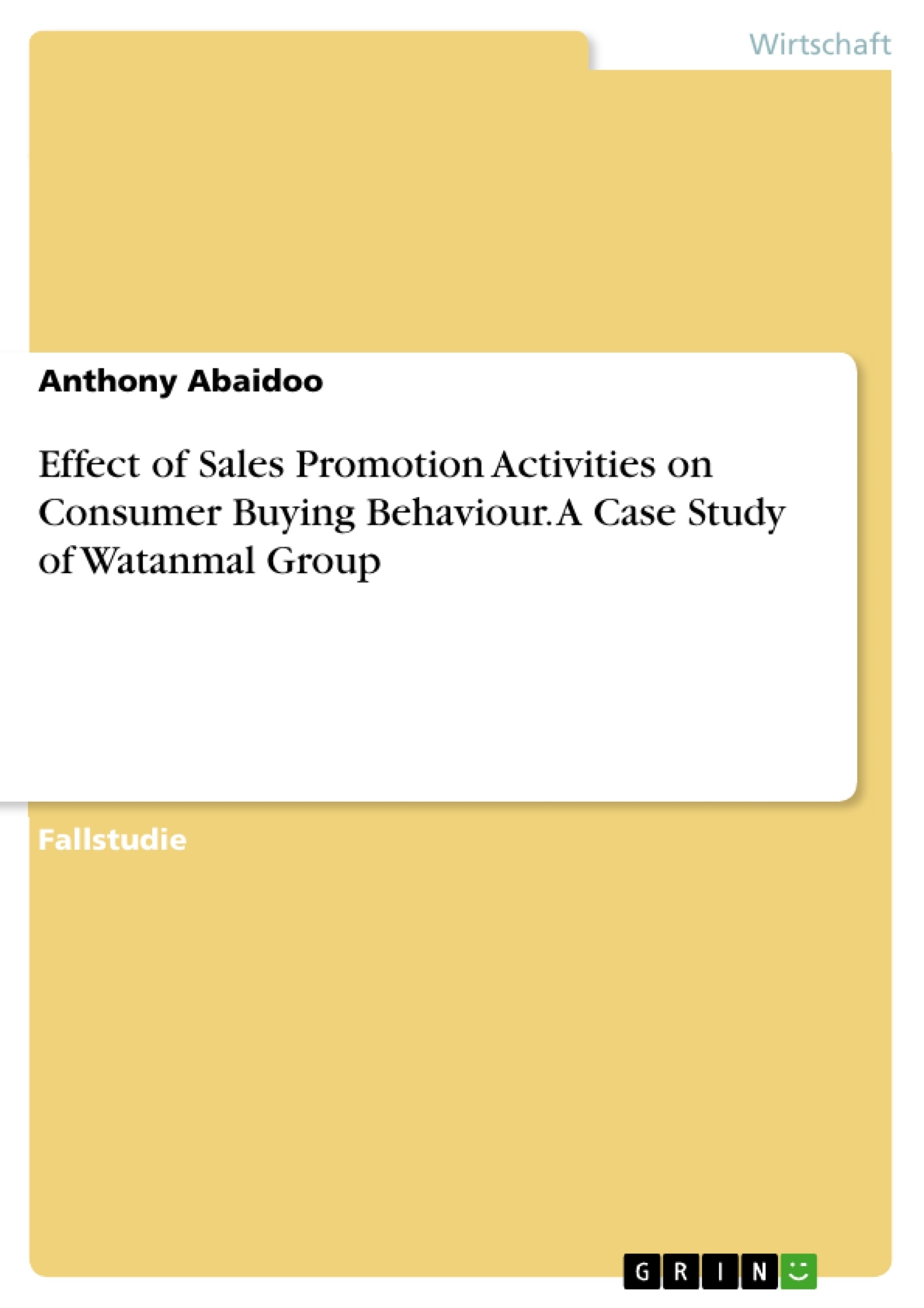The study sought to assess the effect of sales promotion activities on consumer buying behaviour by using Watanmal Group as a case study. The study used both quantitative and qualitative research techniques. In achieving the research objectives both primary and secondary data was used. The primary data was collected through questionnaires. Using a simple random technique 20 employees and 80 customers of Watanmal Group were interviewed. The findings of the study showed that all respondents (100%) are aware of the sales promotion strategy of Watanmal Group. Majority of respondents (48%) are more aware of Buy-one-get-one free promotional strategy and 24% are also aware of free sample promotional strategy.
Results from the study showed that, the most effective promotional strategy is the use of Buy-one-get-one free strategy (58%), followed by free sample (22%) and price discounts (15%). Using a 5 point likert scale technique anchored on 1 – Strongly Disagree, 2- Disagree, 3- Uncertain, 4- Agree, and 5- Strongly Agree, the study found that, sales promotion strategy influence consumer behaviour. The study recommend strongly that Watanmal Group should increase their sales promotion strategies in order to increase their sales and market share since it was found that sales promotion influence the purchase pattern of consumers.
Inhaltsverzeichnis
-
1.0 Background of the Study
-
1.1 Brief Review of Literature
-
1.2 Statement of the Problem
-
1.3 Objectives of the Study
-
1.4 Research Questions
-
1.5 Significance of the Study
-
1.6 Scope of the Study
-
1.7 Limitations of the Study
-
1.8 Definition of Terms
-
2.0 Literature Review
-
2.1 Sales Promotion
-
2.2 Consumer Behaviour
-
2.3 Sales Promotion Activities
-
2.4 Effect of Sales Promotion on Consumer Buying Behaviour
-
3.0 Research Methodology
-
3.1 Research Design
-
3.2 Population and Sample
-
3.3 Sampling Technique
-
3.4 Data Collection Instruments
-
3.5 Data Collection Procedure
-
3.6 Data Analysis
-
4.0 Presentation and Analysis of Data
-
4.1 Socio-Demographic Characteristics of the Respondents
-
4.2 Awareness of Sales Promotion Activities
-
4.3 Effectiveness of Sales Promotion Activities
-
4.4 Influence of Sales Promotion on Consumer Buying Behaviour
-
5.0 Discussion of Findings
-
5.1 Awareness of Sales Promotion Activities
-
5.2 Effectiveness of Sales Promotion Activities
-
5.3 Influence of Sales Promotion on Consumer Buying Behaviour
-
6.0 Conclusion
-
7.0 Recommendations
-
8.0 References
-
9.0 Appendix
Zielsetzung und Themenschwerpunkte
Diese Forschungsarbeit befasst sich mit der Wirkung von Verkaufsförderungsaktivitäten auf das Kaufverhalten von Konsumenten. Am Beispiel der Watanmal Group werden die Auswirkungen verschiedener Verkaufsförderungsstrategien auf die Kaufentscheidungen von Konsumenten untersucht. Die Studie verwendet sowohl quantitative als auch qualitative Forschungsmethoden, um ein umfassendes Bild der Situation zu zeichnen.
- Die verschiedenen Verkaufsförderungsstrategien, die von der Watanmal Group eingesetzt werden.
- Das Bewusstsein der Konsumenten für die verschiedenen Verkaufsförderungsstrategien.
- Die Wirksamkeit der verschiedenen Verkaufsförderungsstrategien.
- Der Einfluss von Verkaufsförderungsaktivitäten auf das Kaufverhalten der Konsumenten.
- Die Rolle der Verkaufsförderung in der heutigen wettbewerbsintensiven Marktsituation.
Zusammenfassung der Kapitel
Die Forschungsarbeit untersucht die Auswirkungen von Verkaufsförderungsaktivitäten auf das Kaufverhalten von Konsumenten. Die Studie analysiert die verschiedenen Verkaufsförderungsstrategien, die von der Watanmal Group eingesetzt werden, und untersucht, wie diese Strategien die Konsumenten beeinflussen. Die Ergebnisse der Studie zeigen, dass Verkaufsförderungsaktivitäten einen signifikanten Einfluss auf das Kaufverhalten der Konsumenten haben.
Schlüsselwörter
Verkaufsförderung, Konsumentenverhalten, Kaufverhalten, Watanmal Group, FMCG, Marken, Strategien, Wirksamkeit, Einfluss, Wettbewerb, Marktforschung, Marketing-Mix.
- Quote paper
- Anthony Abaidoo (Author), 2015, Effect of Sales Promotion Activities on Consumer Buying Behaviour. A Case Study of Watanmal Group, Munich, GRIN Verlag, https://www.grin.com/document/373127



